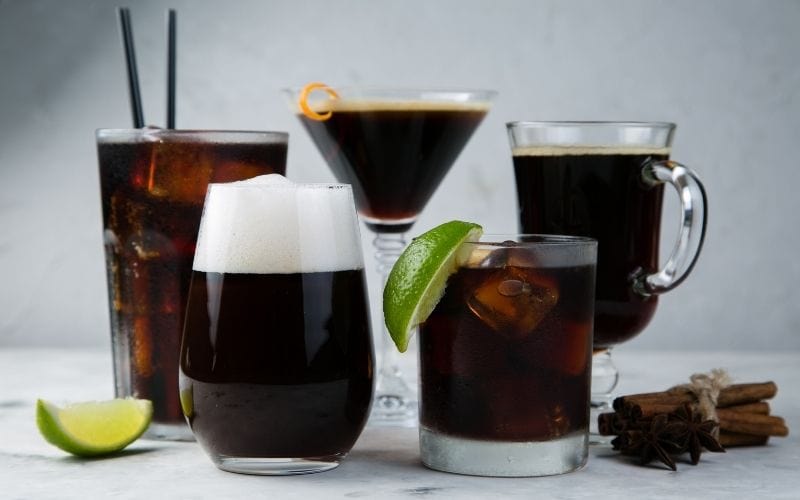
What The Hell Is Amaro? A Spirit Profile For The Brave And Curious


When I was twenty years old, I got a job as a back waiter in a swanky new restaurant and cocktail bar in my city. When applying for the job, I remember reading the cocktail menu and not understanding a single word.
Once I got hired, I finally had the opportunity to march up to a bartender and ask a word from her menu that had been stuck in my head for weeks: “What the hell is amaro?”
Maybe this is a question you’ve asked yourself as well, reading through the menu at your favorite cocktail bar or wandering the aisles of your local liquor store.
Lucky for you, I have a profound moral obligation to share any knowledge of good booze with anyone who may be remotely interested. So if that applies to you, pour yourself a drink, and let’s talk about amaro.

Simply put, Amari (the proper pluralization of Amaro) is a bitter, herbal liquor that is often used to aid in digestion. They are made by infusing a base spirit - brandy, a neutral grain spirit, or even wine - with various barks, herbs, and spices then fortified with sugar and frequently left to age in wooden casks.
The result is a bitter-sweet, highly complex, and often medicinal-tasting product. Sometimes referred to as “potable bitters,” they originate in Italy, amaro being the Italian word for bitter.
Despite this reference, amaro can be used in vastly different ways than your trusty bottle of Angostura, which would typically be measured in mere drops and dashes at a time. Although I would never turn my nose up at an Angostura daiquiri, and I once worked with a bartender who would end every shift with a straight shot of the stuff…he is in the minority, to say the least.
These are some broad amaro descriptors, but the details of amaro production tend to be steeped in mystery. Amari brands are notoriously secretive about their ingredients lists, many companies still using old family recipes dating back hundreds of years.
This is why many amaro brand names are often regional or familial, connoting where they were initially produced and by whom. This is perhaps one of the most exciting aspects of drinking amaro: it tastes like a place.
When you have a glass of amaro, all of the herbs and botanicals that you're tasting were probably things the original creator could’ve found in the area they lived - things they consumed daily that filled the air of their backyards, ingredients included in their meals and medicines.
When enjoying a glass, it’s easy to allow yourself to be transported to another place entirely or even feel nostalgic for a life that was never yours. It is perhaps a way to appreciate a time and place you may never get to visit.

However you want, really.
Most Amari falls into the categories of either aperitivo - something to prime your palate before a meal - or digestivo - something to settle your stomach after a meal.
They can be enjoyed alone, if you have the palate for it (and boy, do I ever), over ice or not, or with very simple mixers like soda water or tonic.
Amaro can also be used as a modifying ingredient in a drink (that is to say, not the primary spirit, but one added in a smaller quantity for additional flavor and depth), or even as the base spirit of a cocktail.
In my opinion? All of them. All of the time. With as many good friends and food as possible.
But perhaps you’d like to start slow. I understand. Well, not really, but here’s a list for you anyways.

Created in Italy in 1860, Campari is one of the most recognized names in amaro production today.
With notes of citrus peel, delicate florals, and warming spice, this aperitivo snuggles up to you with sweet beginnings before giving way to what some would call a punishingly bitter finish.
Campari is frequently enjoyed on its own by European drinkers but has proven less popular with American audiences, as many find this Italian classic to be more bitter than potable. Still, I recommend it to amaro newbies for its versatility when mixing.
Try it in a Negroni, the king of Campari cocktails, or its less boozy little brother, the Americano or, simply pour it over ice and top it up with some soda water. A Campari and soda is this writer’s favorite pre-dinner cocktail. Whatever you do, don’t forget the orange peel.

When it comes to after-dinner drinks, a stiff glass of Averna is hard to beat. This Sicilian classic has been a household name in Italy for decades and has finally found purchase with American audiences as well, and for a good reason.
This dark and dreamy Amaro combines hearty herbs with delicate citrus and flavors of warm, spiced fruit. It is rich, subtle, and is perfectly balanced between sweet and bitter.
I highly recommend trying it by itself, but if you’d like to mix it, I recommend Black Manhattan - a contemporary classic that replaces Manhattan’s typical sweet vermouth with amaro.

This may be my personal favorite. Cynar is a product of the Campari Group, but this dark digestivo doesn’t pack quite as bitter of a punch as its sibling Campari.
Cynar is a deep, hearty amaro with notably earthy and vegetal notes that cut straight through to the bitter end, keeping it from being an overly saccharine spirit. Cynar is composed of 13 different herbs and botanicals, most notably - as one can tell from the label - artichokes.
While this might seem surprising and even off-putting, I always tell my customers that while this is an artichoke amaro, this amaro does not taste like artichokes. Confusing? You’ll just have to try it for yourself.
I love Cynar over an ice cube with a citrus peel. Still, being from the Campari Group, it also goes very well as a replacement for Campari in many Negroni variations.
At 16.5% ABV, it’s a mellow sipper, but there is also a 70-proof version if you prefer something more attenuated.

Certainly the lightest and brightest on the list, Aperol is an aperitivo that cannot be missed. Its flavor, when compared to other Amari, is almost soft and playful.
Most recognized for its bright orange notes (and color), it also contains some soft vanilla as well as a light herbaceousness. Of course, its typical bitterness is associated with amaro.
It is also incredibly fun and easy to mix with. The Aperol Spritz had quite a moment this past year, and if you haven’t tried one yet, this is your sign to do so - preferably before the weather cools down too much.

If you’ve spent some time in the service industry, you (like me) may have had Fernet Branca before you even knew what an amaro was.
Sometimes referred to as “the bartender’s handshake,” this digestivo is most recognizable by its cooling mentholated flavor, as well as its tremendous popularity amongst restaurant industry folk.
Fernet is a category of amaro that is now made worldwide, but the Italian Branca has become somewhat of an industry standard. Fernet Branca is sweet yet surprisingly savory, and its minty finish is somehow more warming than refreshing.
Fernet is often sipped solo after meals but can also be expertly shot while leaning on a sticky bar after a twelve-hour shift. Your call. In Argentina, it is popularly mixed with Coca-Cola, which I highly recommend.
Amaro is a diverse family of funny, bittered spirits with deep roots in Italian culture and heritage. Now that you’re armed with some knowledge, you can sip any number of these mysterious liquors with confidence and style.
But keep in mind: what you’ve read here is only the tip of the iceberg. There is still much to learn, explore, and study on the topic of amaro. In other words: you have a lot of drinking to do.
Megan Beaver is a cocktail bartender and freelance writer hailing from Asheville, NC. When she isn’t making drinks or writing about them, you can find her working in her garden, baking, or hiking through the Appalachian Mountains.


